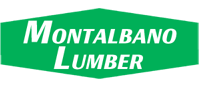Cribbing is used in a wealth of industries as retaining walls. One of the most common uses is in rescue operations where the walls of the endangered site are not stable. Before anyone can be sent in to help, aid workers need to assure that they aren’t going to get stuck in the area as well. This is where cribbing comes in.
The area where cribbing is placed is called a “footprint.” It is meant to be a temporary stable area that grants access to the unstable space. Before placing the footprint, consider three things. First, avoid the area of danger itself. Remember, the cribbing is a stepping stone, not a floor for the unstable space. Next, be sure to remove any obstacles prior to entering the site. This may include debris, rubble, or overturned vehicles. Finally, place cribbing on both stable areas and within reach of unstable areas. Create a bridge.
Inspect your cribbing. All cribbing should be unpainted and unfinished, because it’s strength is reliant on friction and gravity. All cribbing stacks should never be taller than three times the area of the footprint it’s covering. Depending on the weight of the load that it’s supposed to support, cribbing can be arranged in 2×2 stacks or 2×3 stacks.
Occasionally, rescue situations will require cribbing to be laid out in non-square patterns. Be sure to always consult an engineer before realigning cribbing to assure that the finished product will indeed bear the weight it needs to.
For more information on how to use the correct cribbing for a particular job, keep up with our blog. And for all of your cribbing, shoring, and hardwood mat needs, contact Ritter Forest Products today!








